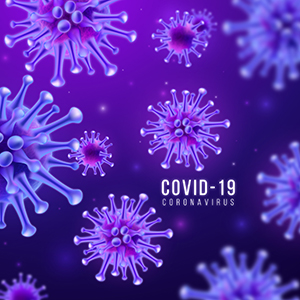Systemic corticosteroids for management of ‘long-COVID’: an evaluation after 3 months of treatment

All claims expressed in this article are solely those of the authors and do not necessarily represent those of their affiliated organizations, or those of the publisher, the editors and the reviewers. Any product that may be evaluated in this article or claim that may be made by its manufacturer is not guaranteed or endorsed by the publisher.
Accepted: 28 September 2021
Authors
Some patients even 4 weeks after Corona Virus Disease 2019 (COVID-19) remain to be symptomatic and are known as “long-COVID”. In the present study we performed the follow up evaluation at 3 months of long-COVID patients, after treatment with systemic steroids. During the study duration, out of the 4,542 patients managed in the outpatient department of the particular unit, there were 49 patients of Long-COVID. The patients having abnormal computed tomography (CT) alongwith resting hypoxia or exertional desaturation were treated with systemic steroid (deflazacort) in tapering doses for 8-10 weeks. We retrospectively analysed the clinical and radiological findings of these patients at first presentation and at about 3 months of follow up visit. On follow up, all the 49 long-COVID patients showed improvement. The occurrence of breathlessness decreased from 91.83% to 44.89% (p<0.001) and cough from 77.55% to 8.16% (p<0.001). Twenty-four patients were prescribed systemic steroids. Out of these, nearly 58% patients had MMRC grade 4 breathlessness, which decreased to < 2 MMRC in about 86% of these patients. MMRC grade (median) decreased from 3 to 1 (p<0.001). Majority of patients who were tachypnoeic and hypoxic at rest (n=7) showed improvement (71%), post-treatment with corticosteroids. Occurrence of normal chest X-ray increased from 12% to 71% (p<0.001). All these patients had abnormal CT thorax initially, and post-treatment 25% had normal CT thorax. Hence, we conclude that systemic steroids are helpful in hastening recovery of select subset of long-COVID patients. Simultaneously, we should be cautious of immunosuppressive effects of steroids like tuberculosis reactivation, especially in tuberculosis endemic countries. These findings have therapeutic implications and may serve as guidance for future approach to the management of ‘long-COVID’ with pulmonary sequalae.
Supporting Agencies
NilHow to Cite

This work is licensed under a Creative Commons Attribution-NonCommercial 4.0 International License.






